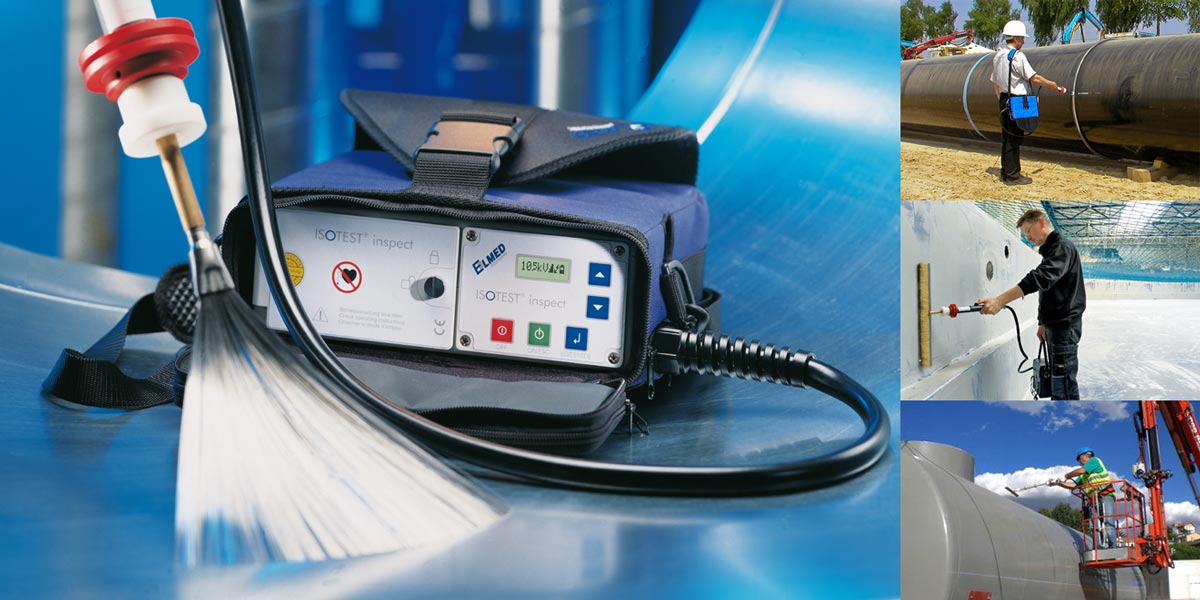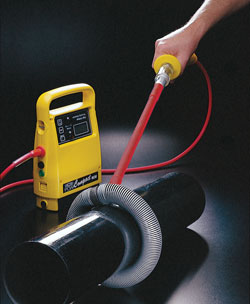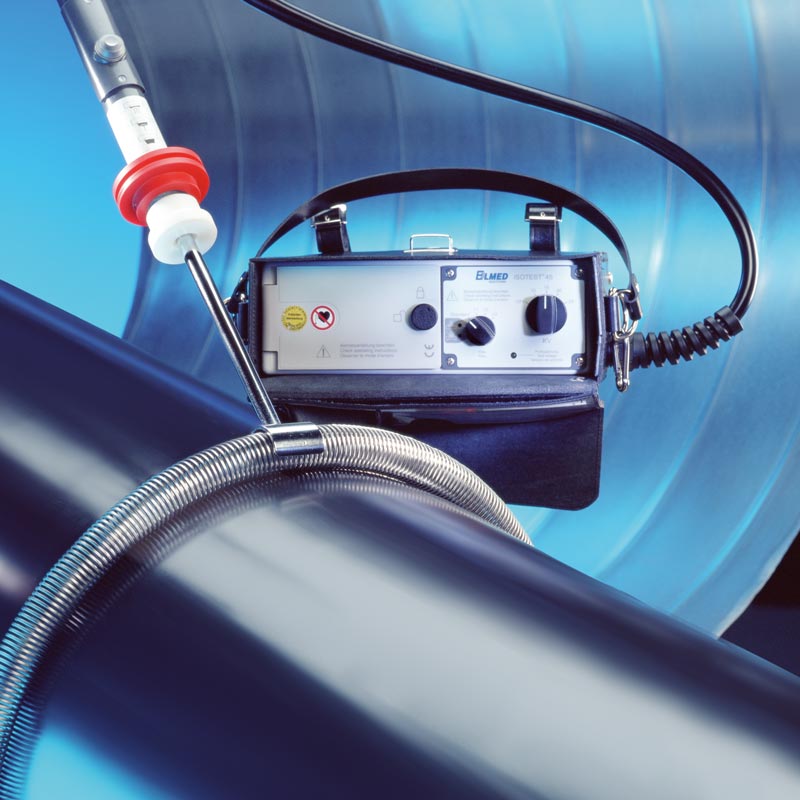Holiday Testing

A holiday test is an inspection method used to detect discontinuities in painted/coated surfaces using specialized tools and equipment. These tools, called holiday detectors, are portable devices that are swept across the coated surface.
Holidays tests work on the concept of electrical conductivity. Metal substrates are excellent conductors of electricity, and therefore allow current to flow through them. On the other hand, many coatings are poor conductors of electricity and resist the flow of electricity. Using this principle, holiday tests use instruments to locate flaws in anticorrosive paints and coatings.
During holiday testing, a ground wire and probing electrode are attached to the same power source. The ground wire is clamped to the specimen being tested while the probe is swept across the surface of the metal substrate. If the probe comes into contact with a coating discontinuity, the exposed metal completes the electrical circuit between the electrode and the grounding wire, resulting in a flow of electricity. This electricity shows up on an indicator, alerting the equipment operator of the defect.
Premature corrosion of a substrate is usually due to a coating failure. A major cause is the presence of flaws in the finished coating, collectively referred to as porosity. Holiday test is used to detect holes, known as holidays or discontinuities, in a coating. Holiday testing allows the detection of even smallest coating flaws invisible to the naked eye. There are various techniques and equipment available for holiday detection.
Elcometer offers a range of holiday detectors that make holiday detection safer, faster and more reliable than ever before. Elcometer’s range of holiday detection testers uses variety of techniques including high voltage holiday detection and DC pulsed holiday detection. All holiday detectors are available with a wide range of accessories that will allow holiday testing on all types of substrates and applications.

Holiday Tests Explained
High voltage Holiday Detection
High voltage holiday test is normally used to determine the existences of discontinuities in coating films. The high voltage, or porosity technique, can be used to test coatings up to 25mm (1″) thick and is ideal for inspecting pipelines and other protective coatings. Coatings on concrete can also be tested using this method. There are two types of high voltage holiday detectors- Continuous DC and Pulsed DC.
Continuous DC Holiday Detection
Continuous DC holiday detectors, such as the Elcometer 236 Holiday Detector, require direct connection to the conductive substrate. The Elcometer 236 holiday tester provides the user with complete control of voltage and sensitivity settings and is available in 2 versions- 15kV and 30kV.
Pulsed DC Holiday Detection
Using Pulsed DC holiday detection technology, the Elcometer 280 Pulsed DC Holiday Detector is designed to ensure that the energy is contained within very short pulses, each pulse having more energy than an equivalent continuous DC system.

This means that the Elcometer 280 holiday detector can be used to test for holidays over slightly conductive coatings, or dirty or damp surfaces.
Using state of the art electronics, the Elcometer 280 holiday detector allows users to inspect coatings – without connecting the earth return lead to the component substrate – ideal for inspecting large surfaces and pipelines. From the two stage safety switch, bright LED’s and screen icons signifying when the high voltage is on, to the extended ribbing to protect the user from spark creep, the Elcometer 280 Pulsed DC Holiday Detector sets the standard for high voltage measurement safety.
With a wide range of probes and accessories available, high voltage holiday test can be carried out on a variety of substrates with a different coating thickness and is suitable for all applications.
